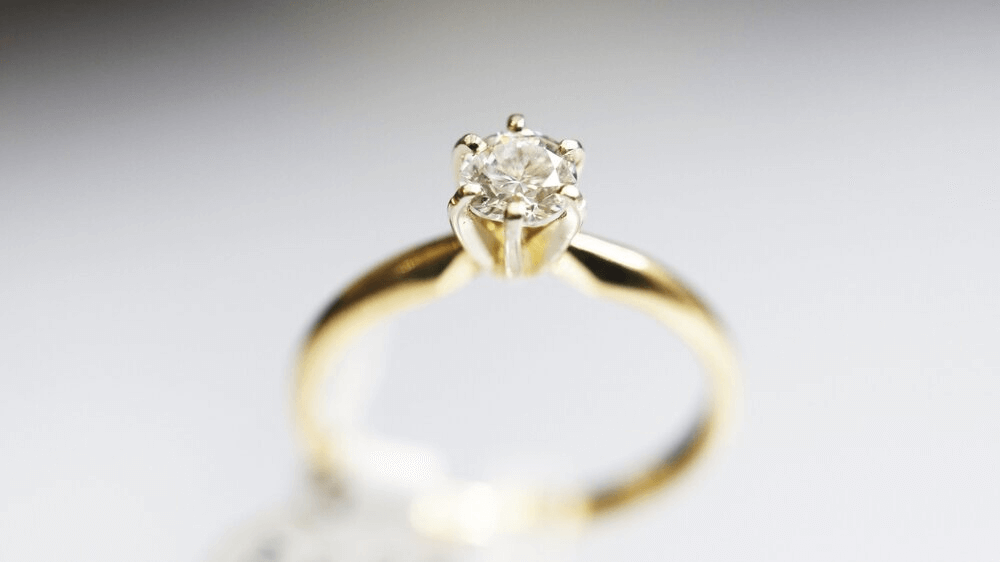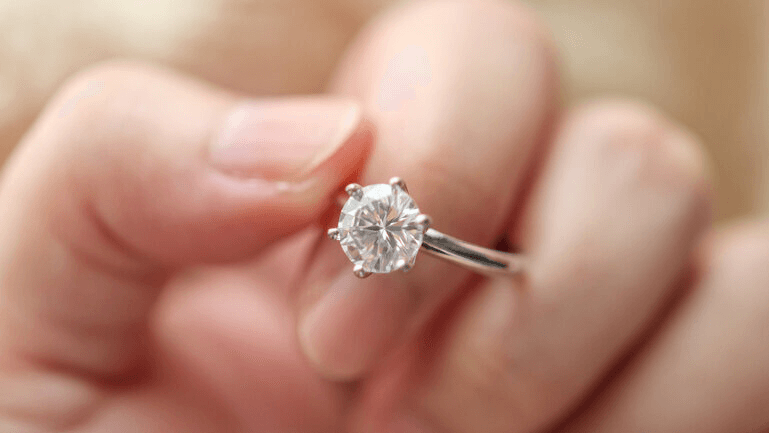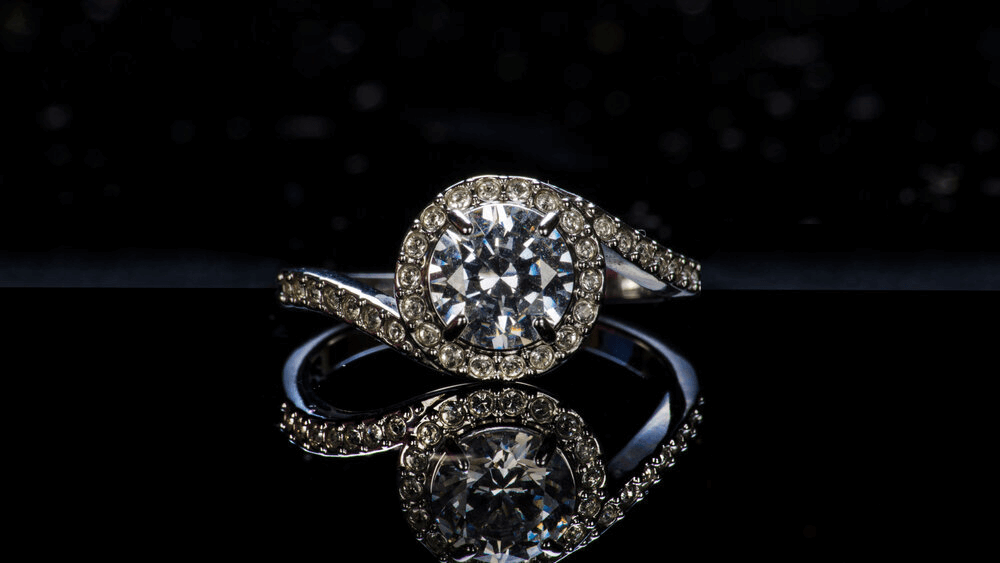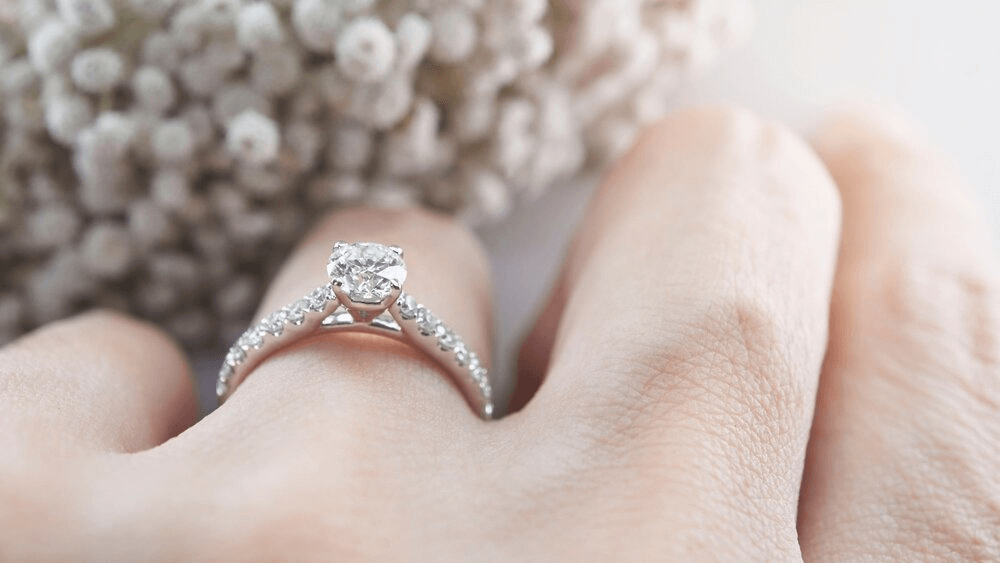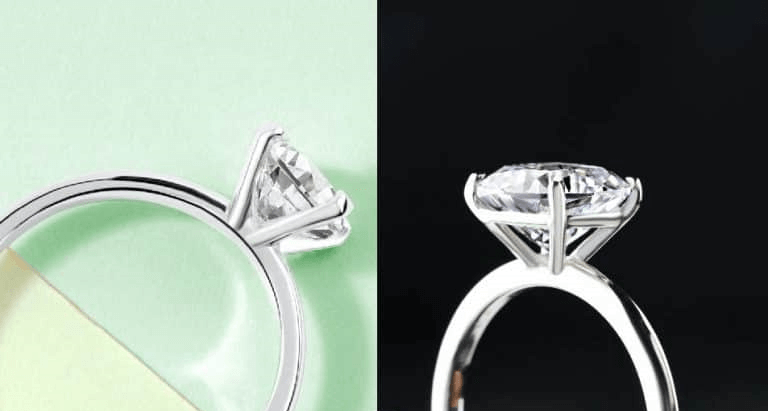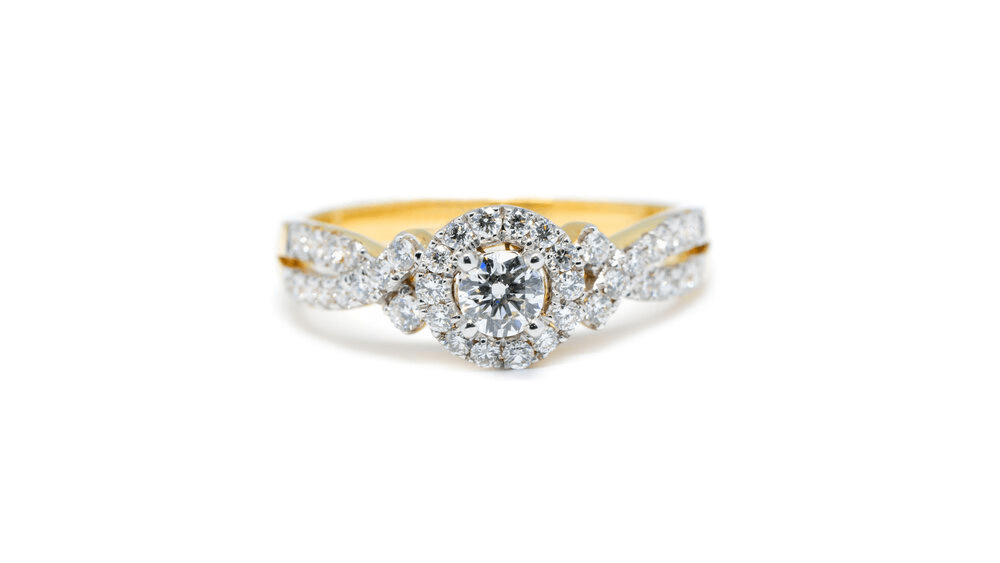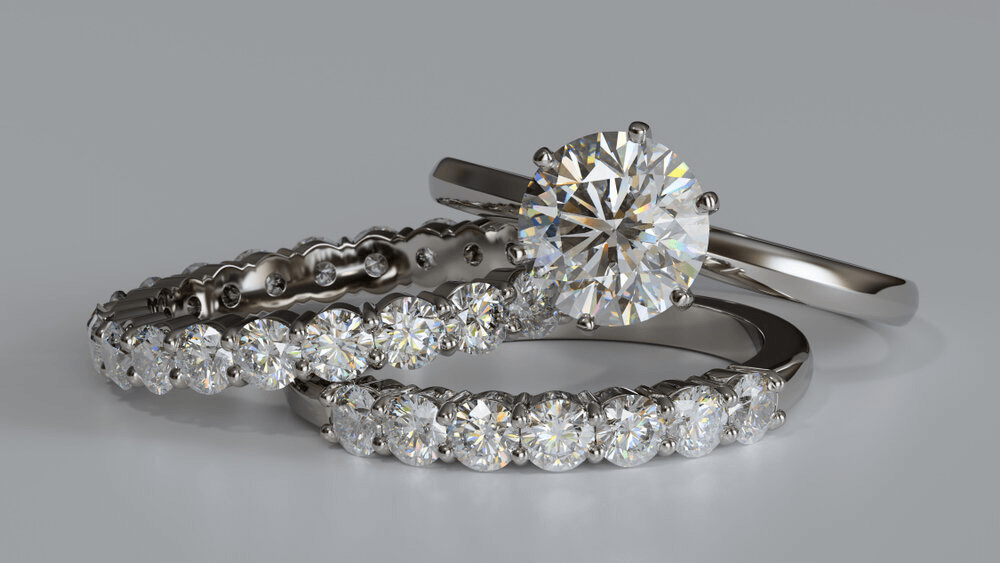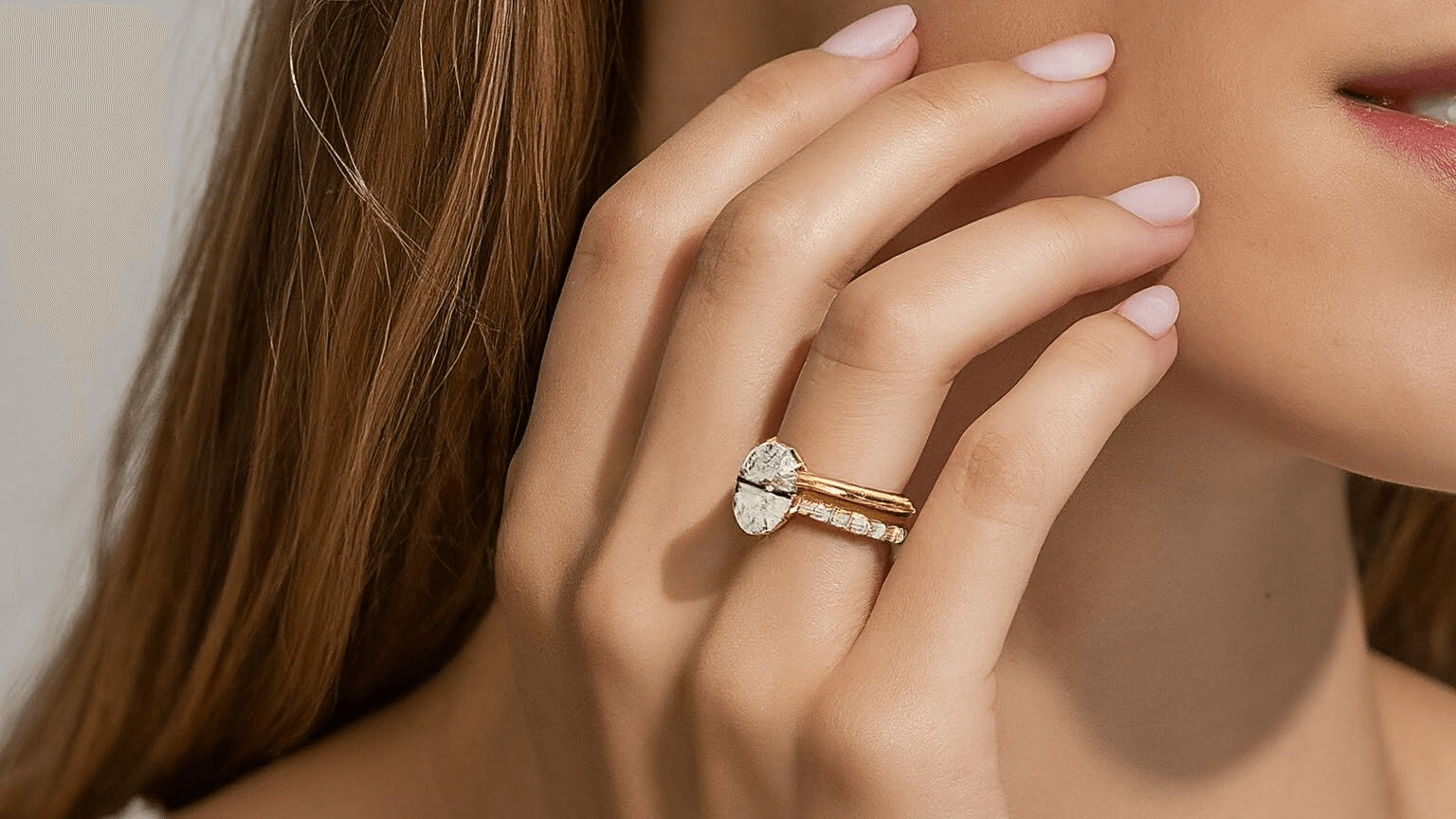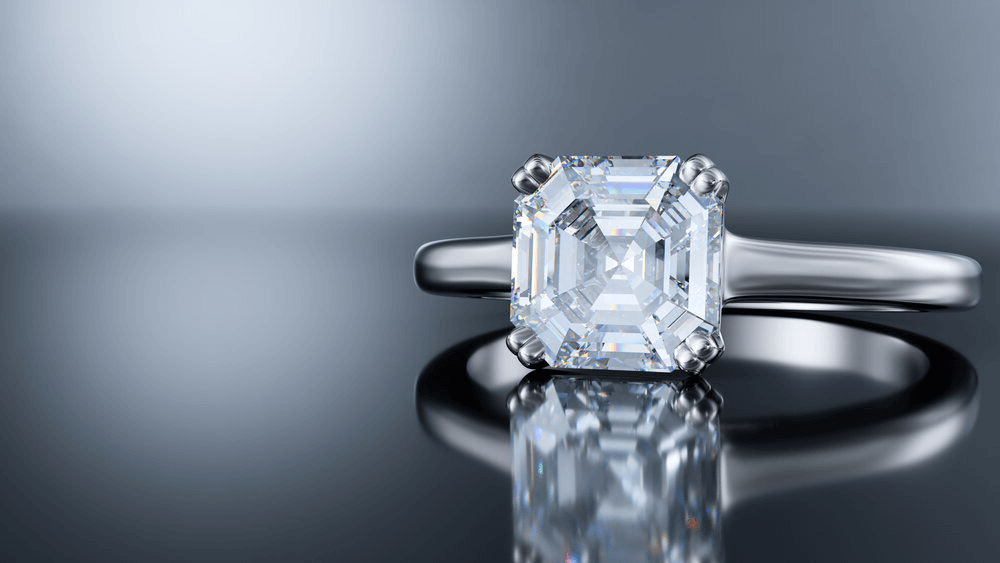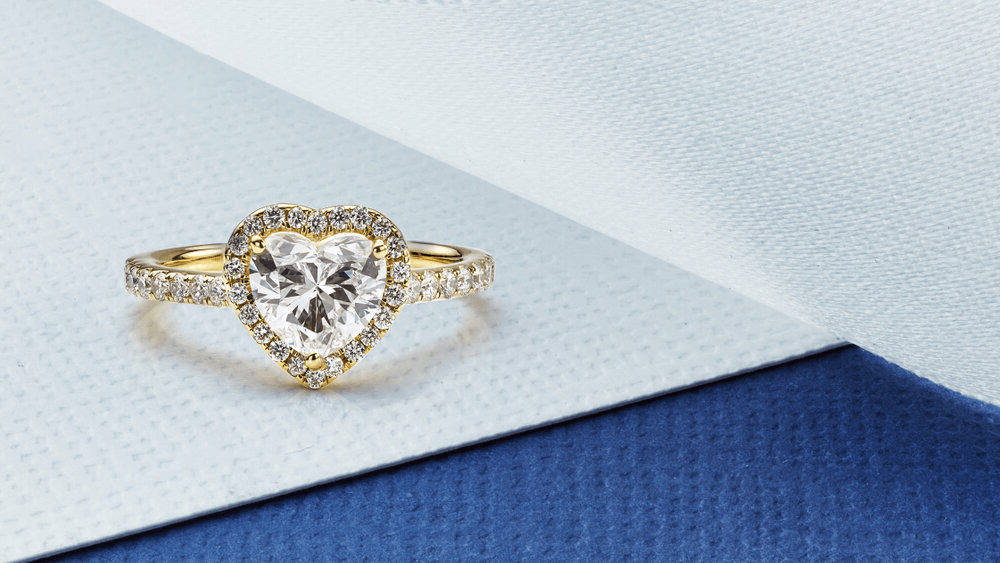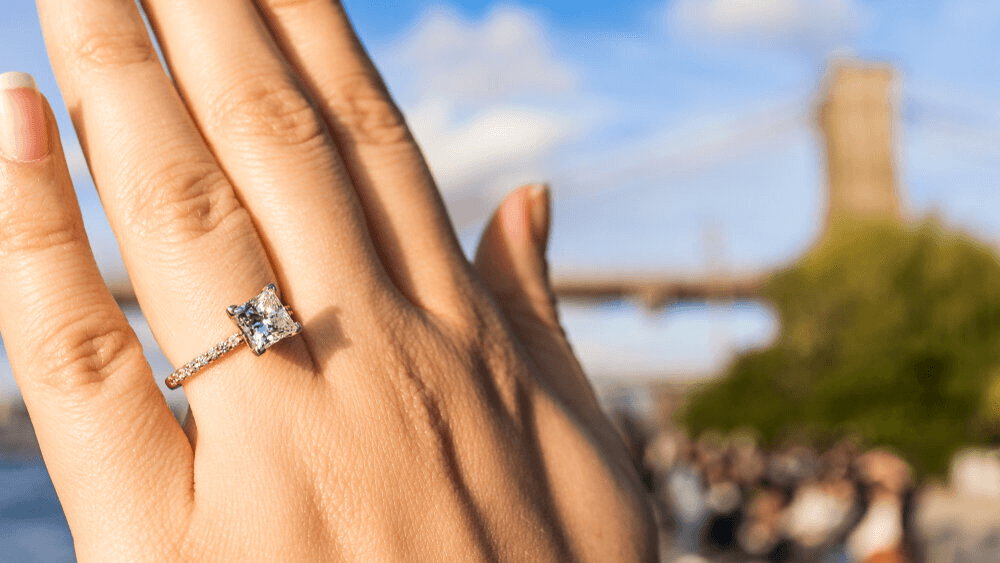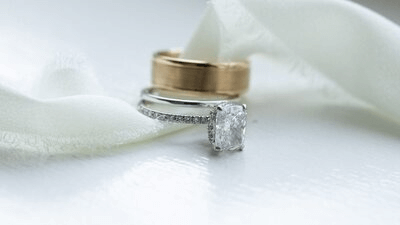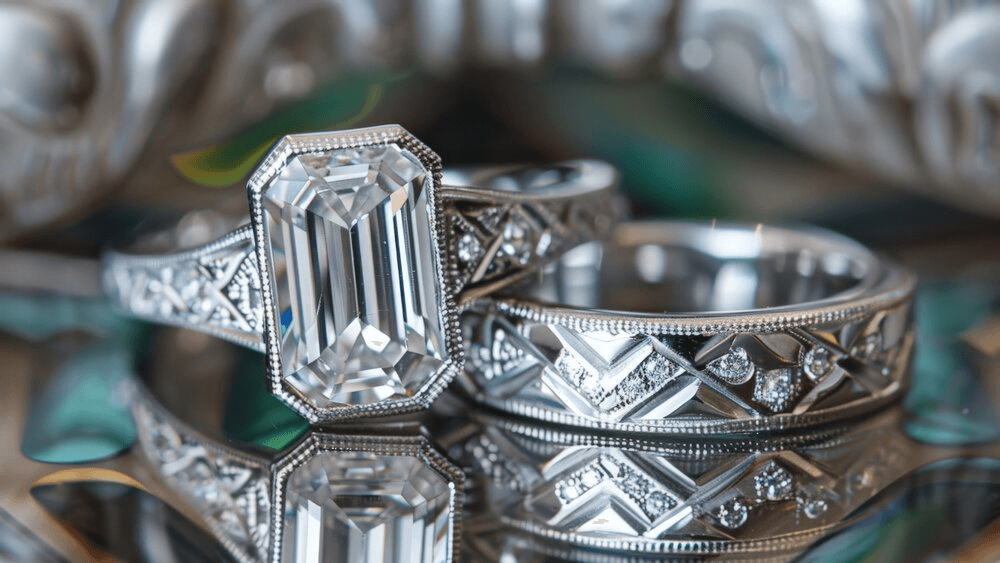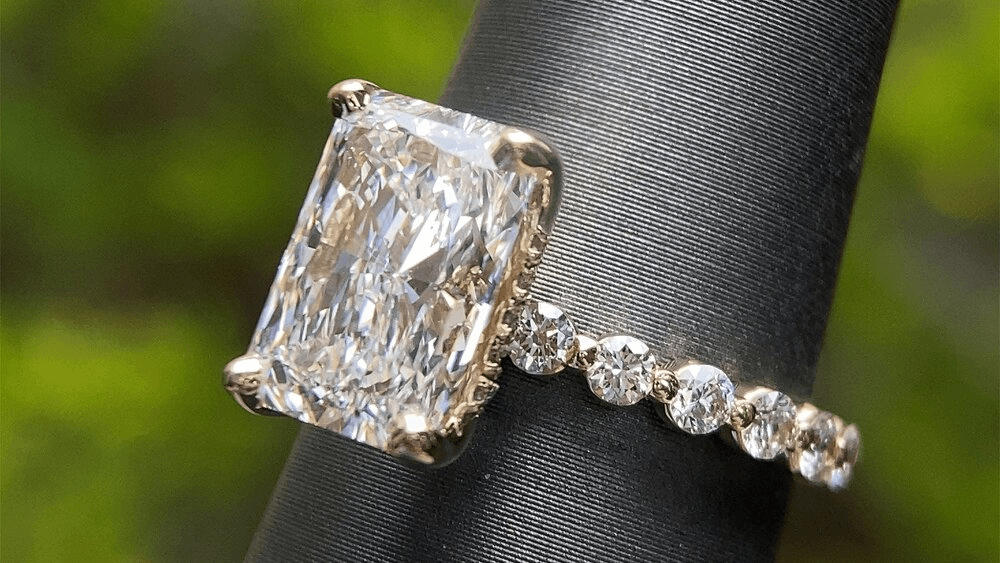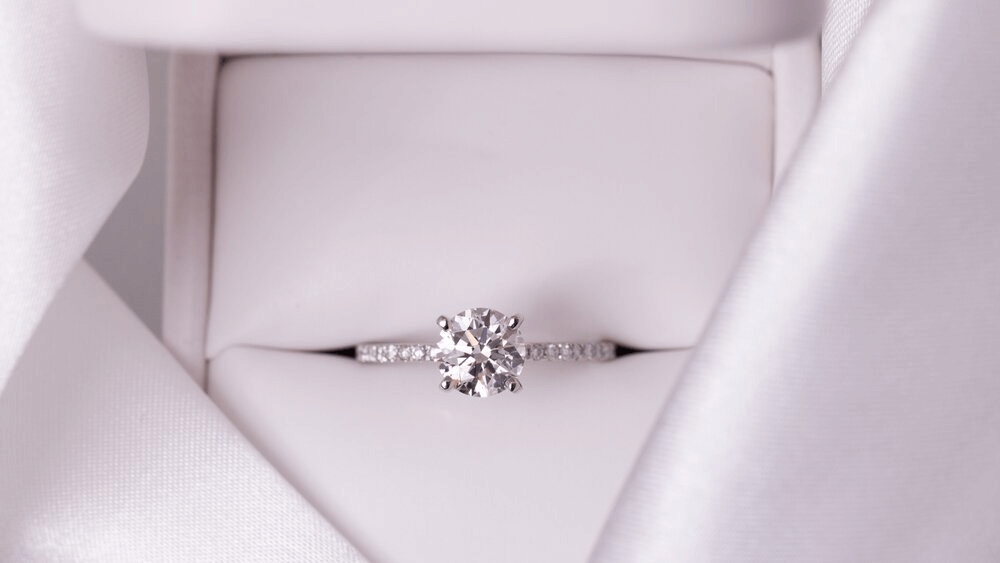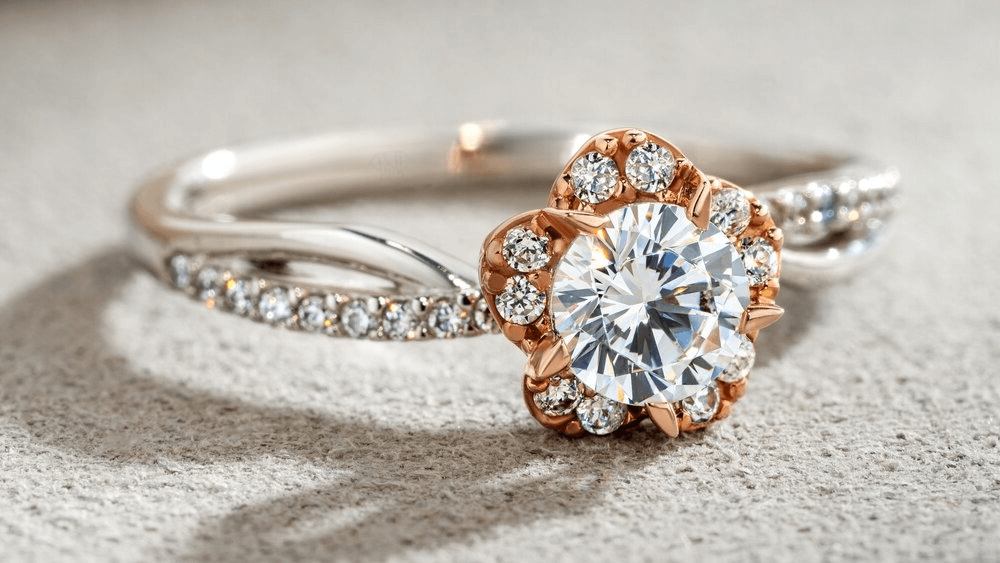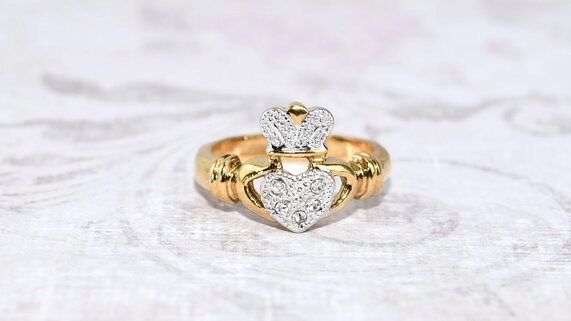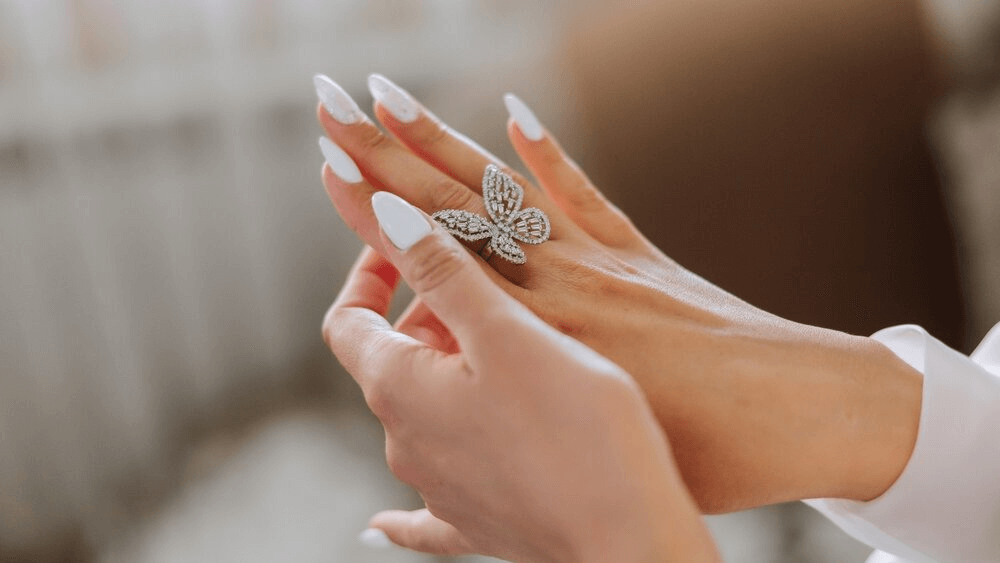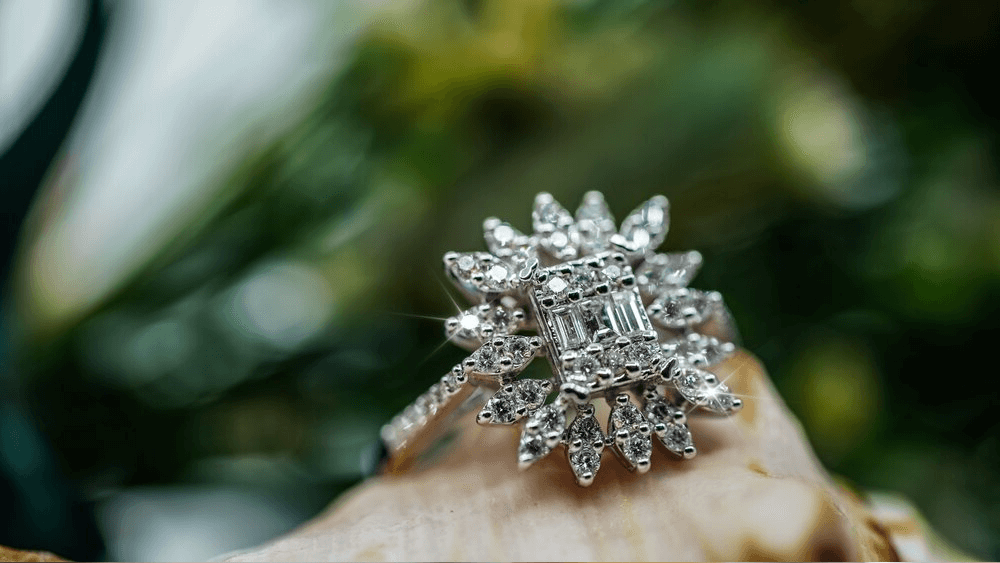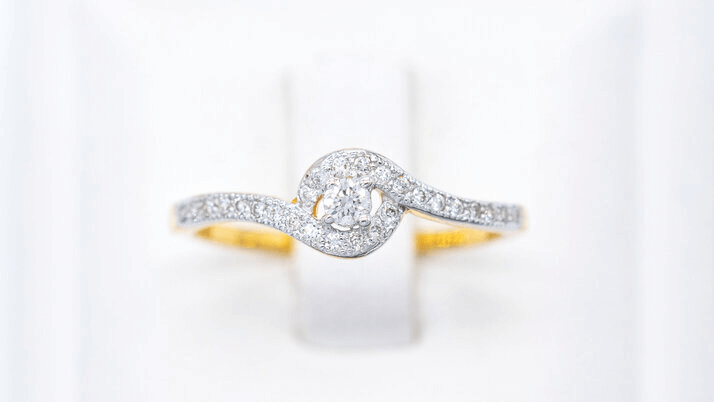Dazzle with Hexagon Engagement Rings for Proposals

By Gary A.

Edited by Olivia H.
Published Aug 8, 2024
Edited on Mar 31, 2025
Hexagon engagement rings offer a stunning blend of geometric precision and unique elegance, making them a perfect choice for those who seek a symbol of harmony and modern sophistication.
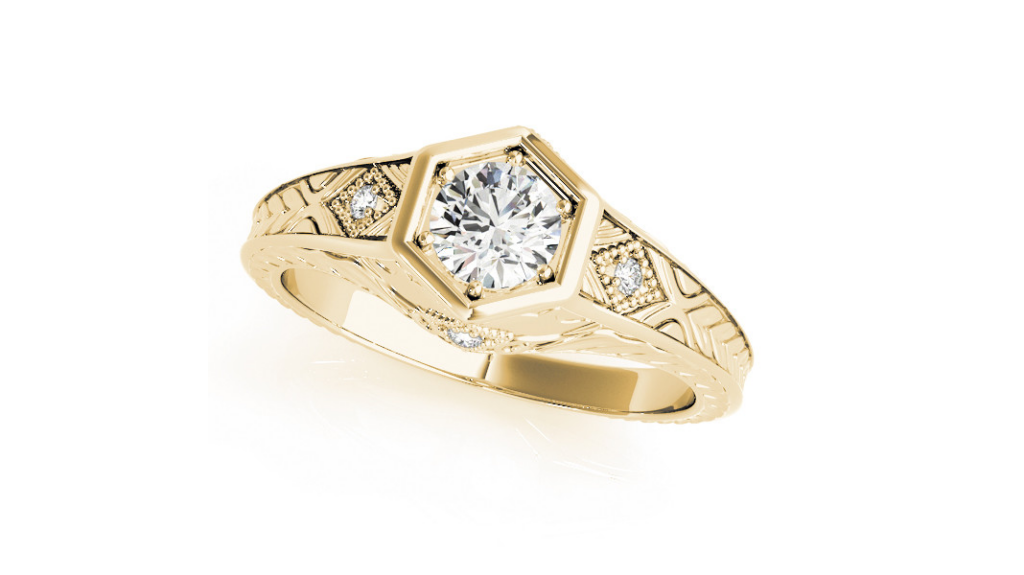
Navigate This Guide:
- 6 Quick Tips for Purchasing and Examining Hexagon Engagement Ring Settings
- Introduction to Hexagon Engagement Rings
- Decoding the Symbolism: Harmony and Balance
- A Spectrum of Styles
- The 4Cs Unveiled: Cut, Color, Clarity, and Carat in Hexagon Diamonds
- Customization: Crafting Your Unique Narrative
- Our Expert Take
- 7 Frequently Asked Questions about Hexagon Engagement Rings
Before we dive deeper into the specifics, here are some practical tips to help guide your decision-making process:
6 Quick Tips for Purchasing and Examining Hexagon Engagement Ring Settings
- Tip 1: Understand the Symbolism and Aesthetics
- Why: The hexagon shape carries deep meanings of balance, union, and communication, which can add sentimental value to your engagement ring.
- Tip: Select a design that resonates with your relationship’s values while suiting the personal style of the wearer, ensuring the ring is both meaningful and fashionable.
- Tip 2: Examine the Setting Thoroughly
- Why: The setting is crucial as it secures the gemstone and significantly impacts the ring’s look and longevity.
- Tip: Check that the hexagon setting’s prongs or bezel firmly grasp the gemstone without any looseness or misalignment, safeguarding the stone and maintaining the ring’s beauty.
- Tip 3: Quality of the Gemstone
- Why: The gemstone, often a diamond, is the focal point and should be of high quality to captivate attention.
- Tip: Assess the gemstone using the 4 Cs (Cut, Color, Clarity, Carat) with a keen eye on the cut’s symmetry, particularly for hexagon shapes, ensuring it enhances the stone’s brilliance and confirm its certification from reputable institutions.
- Tip 4: Material Matters
- Why: The choice of material affects the ring’s durability, aesthetic, and cost.
- Tip: Opt for a metal that complements the wearer’s skin tone, suits their lifestyle (especially if they have metal allergies), and fits within your budget, ensuring the ring’s longevity and comfort.
- Tip 5: Comfort and Size Accuracy
- Why: Daily wear necessitates that the ring is comfortable and perfectly sized.
- Tip: For a precise fit, consult a professional jeweler, considering factors like hand dominance and potential size changes over time to avoid future discomfort or resizing issues.
- Tip 6: Craftsmanship and Design Integrity
- Why: High-quality craftsmanship guarantees the ring’s durability and enduring beauty.
- Tip: Inspect the ring’s detailed work, finish, and design consistency closely. Pay special attention to the hexagon’s symmetry and proportions, ensuring even lines and equal angles for a visually balanced and aesthetically pleasing piece.
Now that you’ve got these practical tips, use Jeweler AI below to find the perfect engagement ring that suits your style and budget:
Introduction to Hexagon Engagement Rings
Often, the most popular diamond shapes have very few sides. Circles and ovals technically have 0 sides, so the round brilliant and oval cuts set a very high (or, perhaps, low?) bar when it comes to keeping things simple. The marquise, pear, and even the heart all continue that legacy of fewer = better, while the princess and the radiant hedge their bets at just four sides.
The emerald cut technically features 8 sides, since its corners are bevelled, turning a rectangle into an irregular octagon – but most of us still tend to think of it as a four-sided shape.
So, what gives? Why not embrace the multi-sided shape more? That’s exactly what the hexagon engagement ring does – and believe us…it does it well.
Decoding the Symbolism: Harmony and Balance
Hexagons are a naturally occurring shape, a little like spirals. From honeycombs to snowflakes, six sides are a symmetrical, balanced staple that bring strength and order – tessellations, as they’re called – where other shapes naturally produce more chaotic, irregular patterns.
Also, this is a rarer diamond cut. The symbolism inherent to a more unusual, unique choice is clear for anyone to see. This is the ultimate choice for someone who prefers to subvert expectations without going too ‘off the wall’ with their choices.
Strength and Stability: How hexagons represent enduring love
As any bumblebee will no doubt confirm, hexagons are capable of producing incredibly strong networks thanks to the unique way their sides fit together. The weaknesses inherent to, say, a rectangle are avoided in the hexagon shape, and that really makes for some beautiful symbolism as an engagement ring.
Strong, solid, stable – what else do you need for your great love story?
A Spectrum of Styles
Those five sides also offer a huge amount of versatility when it comes to designing the engagement ring. While the whole mark of the hexagon diamond is its straight edges – and, correspondingly, its step cut facet design, which bears a strong semblance to the emerald cut – the proportions of the hexagon mean that it’s also perfect for pairing with rounder styles.
Also, the hexagon is an old diamond shape, but its rarity these days means that it can easily appear a lot more contemporary than it really is.
From Vintage Grace to Contemporary Chic: Exploring Designs
The hexagon cut was particularly popular during the era of art deco – the 1920s. Back then, straight lines, geometric shapes, and simple, repeating patterns were all the range, and the hall of mirrors effect created in the hexagon cut’s centre was the perfect complement to any roaring, flapper-style fashion.
The emerald and Asscher cuts, however, found lasting popularity within the jewelry world, while the hexagon fell out of favor. It’s a complex cut to make, and the emerald is better at producing the hall of mirrors that fans of step cuts really love.
However, these days, more people are falling in love with diamond cuts that were all but lost to history. Take the rose cut, for instance – it’s not as visually impressive as any modern cut, but it’s found its modern niche.
A great way to modernise the hexagon cut is to pair it with a simple, minimalistic bezel or solitaire. That way, the silhouette is the star of the show, and no one will be in any doubt about your ring’s unique status.
The Material Palette: Gold, Platinum, and Beyond
Like any step cut, the hexagon diamond shape ‘swallows’ a fair bit of color from surrounding features. If you pair an emerald with yellow gold, you’ll definitely see echoes of that gold rippling through the hall of mirrors through the diamond’s table – and it’s exactly the same story with hexagon diamonds.
This is a beautiful feature, and it’s a mistake to assume this will ruin your efforts to find a colorless diamond. The reflection of a colored metal is distinct from color trapped within a diamond, so don’t overthink it.
But platinum or white gold offers a great option for modernising your hexagon. Yellow gold was all the rage back in the 20s, so a colorless metal will avoid your engagement ring feeling too vintage.
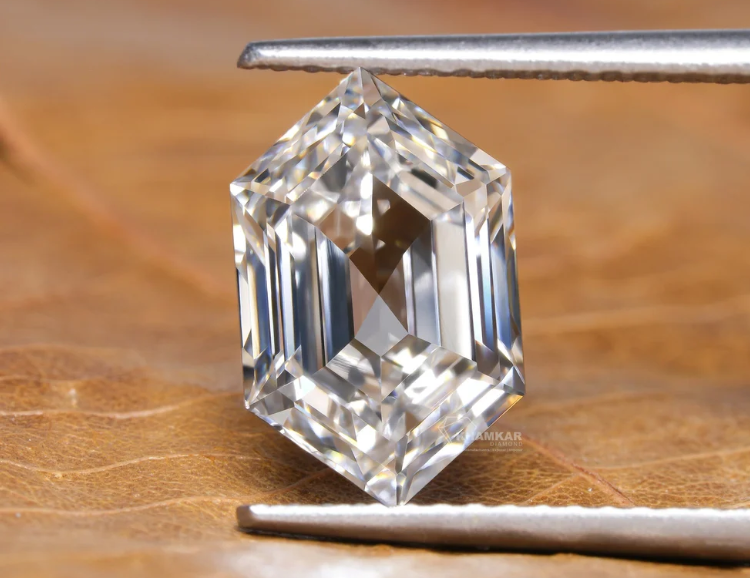
The 4Cs Unveiled: Cut, Color, Clarity, and Carat in Hexagon Diamonds
Whatever diamond shape you’re considering, the Four Cs will always be the most important factors you take into consideration. As ever, cut is the most important. Since hexagons are already limited in terms of sparkle (as are all step cuts, since they don’t feature those high-brilliance triangular facets), a top-quality cut is all the more important for maximizing shine and impact.
What makes the hexagon a tricky diamond cut to pin down is the fact that the GIA offers no specific cut grade for this shape. This isn’t unusual. The round brilliant is currently the only diamond shape that has a dedicated cut grade – for the rest, you need to focus on the grades for symmetry and polish, while also understanding the ideal proportions for the shape. When it comes to hexagons, however, there’s a specific issue known as windowing – a phenomenon seen in low quality step cuts that causes the stone to feel too transparent. A hexagon with significant windowing will allow you to see whatever surface the diamond is sitting on very clearly through those facets, really harming sparkle and making the diamond appear glassy.
This is easy enough to avoid with an emerald cut. At WillYou, we have very high standards for all emerald cut diamonds we sell. For a very rare cut like the hexagon, avoiding windowing is a much harder process.
Step cuts are also more demanding when it comes to color and clarity, since the facets are more open and offer a clearer view on the ‘inner workings’ of the diamond.
Carat comes down to you and your budget. Hexagon diamonds aren’t super deep, so they have a pretty sizeable face-up appearance, meaning even 1 carat will get you pretty far…
Customization: Crafting Your Unique Narrative
All the most romantic engagement rings feature something a little more personal to the wearer, even if it’s just your initials. Check out our guide to engraving your engagement ring here.
Price Dynamics: What Influences the Cost?
As always, the less popular cuts tend to be the more affordable – but, the trouble is, the hexagon is a little rarer than most, and its recent stint of popularity means that demand is higher than supply. As you can imagine, this pushes the price higher.
Generally speaking, an eye clean 1 carat hexagon diamond will fall around the $3,000-$4,000 mark.
At that price, you’re usually better off investing in an Asscher cut – otherwise known as a square emerald. The bevelled corners create a similar effect to the shape of the hexagon, but the shape is much more widely available and easier to get at a reasonable price.
Where to Find Your Hexagon Engagement Ring
As we mentioned above, the hexagon is a rare diamond shape. Even with more people showing an interest in this shape, there aren’t many being produced, so you may run into some difficulties tracking one down.
Also, that sticking point when it comes to cut quality can be a major hurdle for shoppers to overcome. This is part of the reason why the emerald cut is so popular still. It’s a lot easier to ensure that you’re getting a beautiful emerald cut than it is to find a perfect hexagon free from too much windowing.
For the best chances of success, you may need to go the vintage route here and look at a second-hand diamond. Again, this is a risky decision to make – and it’s something we cover in our full guide to vintage engagement rings.
Our Expert Take
Hexagon engagement rings look great, modern, and very elegant. There are some downsides to opting for a hexagon diamond, not least of all the fact that they are very hard to come by – particularly at the level of quality you’ll want for an engagement ring.
If you just can’t get over the beautiful, sophisticated look of the hexagon diamond, then consider an Asscher cut instead. While they’re not the most widely available diamond shape, they are a lot easier to track down than hexagons, and that royal history makes them a very tempting prospect to any romantic at heart.
7 Frequently Asked Questions about Hexagon Engagement Rings
- Q: What makes a hexagon engagement ring unique?
- A: A hexagon engagement ring stands out due to its geometric shape, which offers a modern and distinctive look compared to traditional round or square settings. Its six-sided design can also symbolize harmony and balance, adding deeper meaning to the ring.
- Q: Can hexagon rings fit any style or setting?
- A: Yes, hexagon rings are versatile and can be adapted to a variety of styles, from vintage and art deco to contemporary and minimalistic. They can be set with or without halos, in solitaire, or with accent stones to suit personal preferences.
- Q: How do I choose the right metal for a hexagon engagement ring?
- A: Select a metal based on durability, color preference, and budget. Platinum and white gold are popular for their strength and neutral hue, while rose and yellow gold offer a warmer tone. Consider the wearer’s skin tone and lifestyle when making your choice.
- Q: Are hexagon engagement rings more expensive than traditional shapes?
- A: The price of a hexagon engagement ring depends on various factors, including the gemstone’s quality, the metal type, and the complexity of the design. While the shape itself may not significantly impact the cost, unique custom designs may carry a higher price tag.
- Q: How should I care for my hexagon engagement ring?
- A: Regular cleaning with mild soap and water, avoiding harsh chemicals, and removing the ring during heavy physical activities can help maintain its beauty. It’s also wise to have the ring professionally inspected and cleaned periodically.
- Q: Is it possible to resize a hexagon engagement ring?
- A: Resizing is possible for most hexagon engagement rings, but the ease of resizing will depend on the ring’s design and the metal used. Complex designs with multiple stones may be more challenging to resize, so it’s best to aim for an accurate fit from the start.
- Q: Can I customize a hexagon engagement ring?
- A: Absolutely! Many jewelers offer customization options for hexagon engagement rings, allowing you to choose the stone type, metal, setting style, and additional design elements to create a truly personalized piece that reflects your unique relationship.
Discover the Perfect Ring with Jeweler AI: Your Hexagon Engagement Dream Awaits.
FOLLOW-UP GUIDE SERIES





